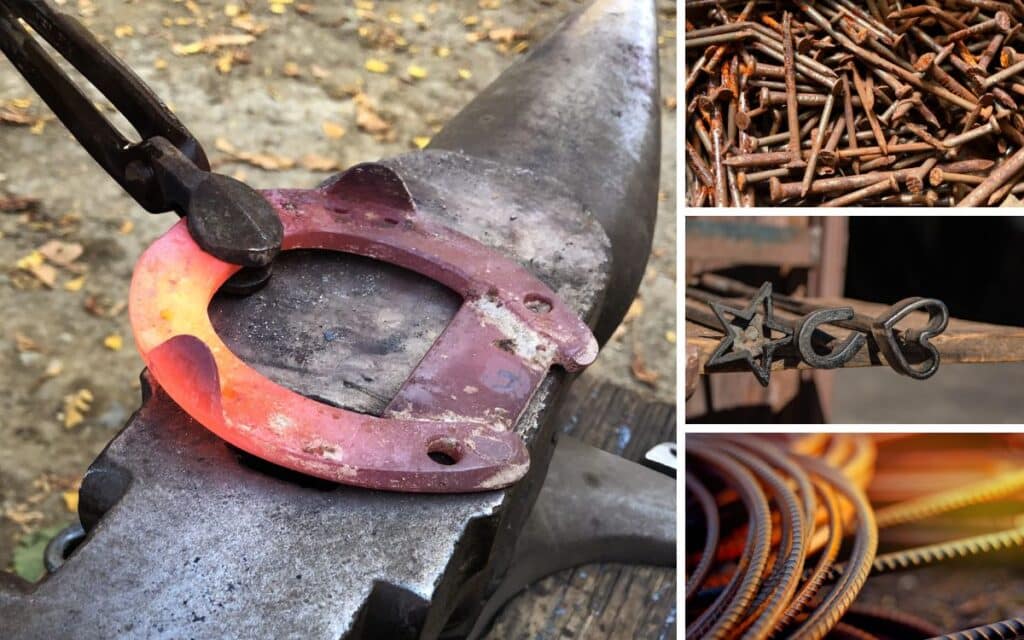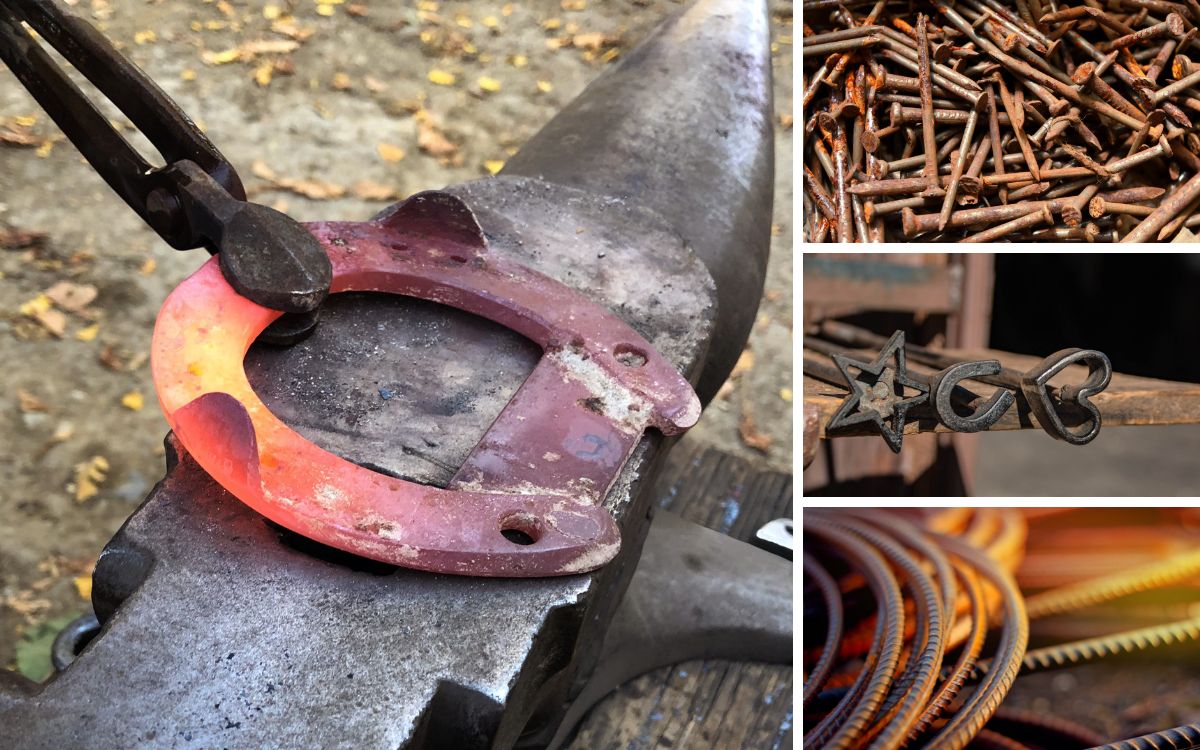Iron has woven a complex tapestry of superstitions and folklore through UK and Irish history.

Iron Folklore and Superstitions
From the transition of the Bronze Age to the Iron Age to its role in shaping cultural beliefs, iron holds a special place in the hearts and minds of these lands. Here are some intriguing iron-related beliefs and stories from the UK and Ireland, and other parts of the world.
Cold Iron Protects Us
Deeply ingrained in the culture, the belief in “cold iron” resonates.
Nailing an iron horseshoe above the door was said to repel evil spirits and bring good luck. The tradition is rooted in the notion that malevolent supernatural entities, such as ghosts, fairies, and witches, are averse to iron’s material nature. This practice continued through history, evolving to encompass other customs like surrounding cemeteries with iron fences to contain the souls of the departed.
Burying an iron knife beneath one’s doorstep was believed to form a barrier against the entry of witches, fortifying homes against their malevolent influence.
Horseshoe Bring Luck
Horseshoes, with their functional purpose and symbolic value, are considered luck-bringers in the UK and Ireland.
When hung with the open end pointing upwards, they were believed to collect and store luck, symbolizing a vessel that holds positive energies.
On the opposite side, hanging them upside down was thought to shower luck upon the household, signifying the release of accumulated good fortune.
The tale of Saint Dunstan and the Devil further cemented their protective reputation, attributing their powers to their iron composition.
Iron Transition Brought Strength
The transition from the Bronze Age to the Iron Age marked a monumental shift in the history of the UK and Ireland.
Iron, with its superior durability and strength, replaced bronze for tools and weapons, leading to transformative cultural changes.
This transition inspired legends found in Homeric epics and the Vedas, shaping the narrative of historical shifts.
Iron’s prevalence in this era was a catalyst for shaping the beliefs and practices of these lands.
Iron in Folklore
Iron’s significance extended beyond the material realm in the folklore of the UK and Ireland.
This strong, enduring metal was often associated with lifeforce and vitality, serving as a tangible representation of the earth’s hidden strength. This belief contributed to iron’s association with protection against supernatural forces.
The belief in iron’s lifeforce attributes lent it a sense of magical potency, fostering its role as a barrier against malevolent spirits.
Cemeteries Used Iron Too
Iron’s protective properties found a tangible application in architecture within cemeteries.
Iron gates and fences surrounding burial grounds were not only built for their sturdiness but also believed to act as barriers for spirits.
This prevented wandering souls from venturing beyond designated burial grounds and shielded the living from potential negative energies emanating from the deceased.
The use of iron as a protective element at these sacred sites illustrates the extent of iron’s impact on the beliefs and practices of the time.
Iron in Everyday Life
Iron’s influence extended beyond the supernatural, permeating everyday life in the UK and Ireland.
Iron objects were seen as more than just tools; they were amulets with healing and protective qualities. The act of touching an iron object was believed to transfer its safeguarding energies to the individual.
This practice showcased iron’s dual nature—both practical and mystical—enhancing its significance in the lives of the people.
Iron in Architecture
Iron’s presence in architecture in the UK and Ireland is evident in various features, such as door knockers, handles, and other decorative elements.
These iron embellishments served not only structural functions but also were believed to function as guardians against supernatural intruders.
The incorporation of iron into architectural designs was a tangible way to ensure protection and ward off malevolent spirits from entering homes.
Fairy Aversion to Iron
Folklore abounds with tales of faeries and spirits avoiding iron.
In the UK and Ireland, these supernatural beings were believed to possess a nature closely tied to the ethereal realm. Iron’s grounding and material properties stood in contrast to their otherworldly essence.
This aversion was leveraged to ward off faeries and prevent their mischief from impacting the lives of the people.
Iron Cross Symbolism
The Iron Cross, with its origins in medieval Europe, found its way into the folklore of the UK and Ireland.
This symbol of protection was believed to possess the power to ward off malevolent forces and provide security. Its incorporation into various aspects of culture further underscored iron’s role as a protective agent, extending its influence beyond mere superstition.
Iron’s Enduring Legacy
Iron’s influence continues to echo through time in the UK and Ireland.
In cultures like Tibet, iron alloys, including meteoric iron, held significance in the crafting of ritual implements.
The celestial connection attributed to meteoric iron made it an ideal material for creating sacred objects infused with spiritual meaning.
This enduring legacy illustrates iron’s lasting impact on the beliefs and practices of these lands.
Did we miss anything? Tell us about your thoughts about Iron folklore and superstitions in the UK and Ireland in the comments below!







